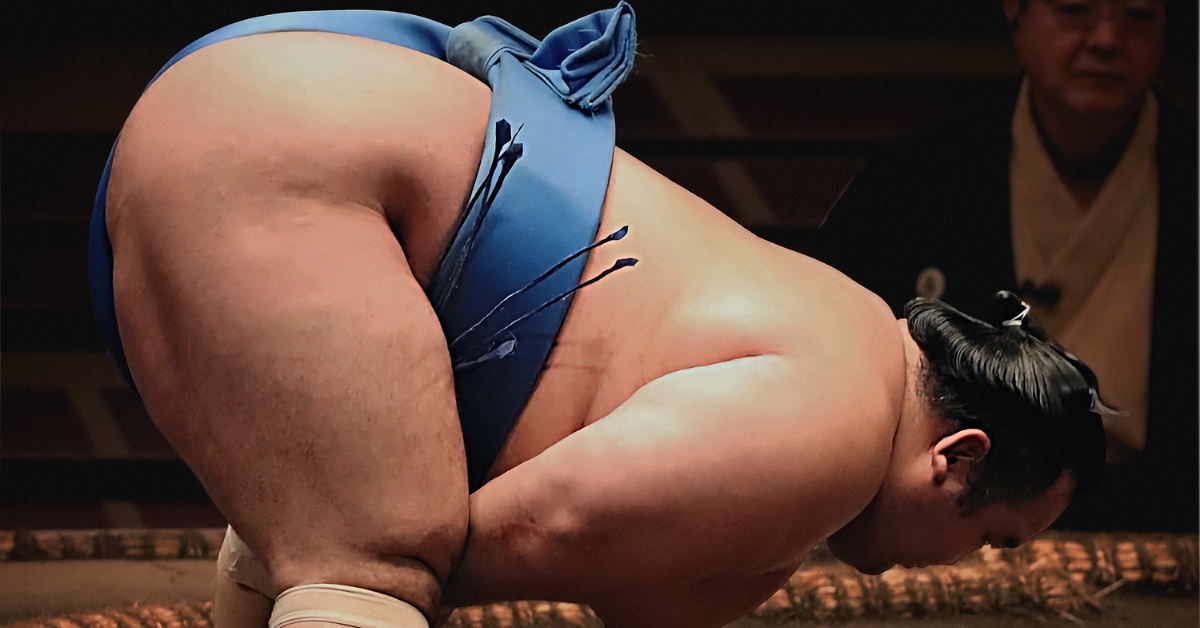In the world of sumo wrestling, one item stands out immediately to international spectators—the mawashi, a thick belt worn by wrestlers. This simple-looking cloth is actually a deeply symbolic garment that represents tradition, discipline, and respect. Understanding its form and function is key to truly appreciating Japan’s national sport.
What Is Mawashi? The Fundamental Attire in Sumo
The mawashi is a belt-like cloth worn by sumo wrestlers when stepping into the ring. It plays a critical role not only as attire but also as a symbol of the wrestler’s readiness and respect for the match. Firmly wrapped around the body and secured through the legs, it is considered the official gear of combat in sumo.
Usually measuring between 4 to 7 meters in length and about 60 cm wide, mawashi is made from cotton or silk. If improperly tied, it may unravel during a match, resulting in disqualification. Wrestlers carefully rewrap it before each match to ensure it remains tight, using this moment to center themselves mentally. Thus, the mawashi serves both a practical and ceremonial purpose in the sport.
Types of Mawashi and Their Uses
| Type | Use | Material | Characteristics |
|---|---|---|---|
| Practice Mawashi | Daily training | Cotton | Durable, washable, not decorative |
| Official Mawashi | Tournaments and matches | Silk | Shiny black, traditional design, emphasizes formality |
| Ceremonial Mawashi | Ring-entering ceremonies | Silk with gold thread | Ornate embroidery, symbolizes identity and prestige |
Each type of mawashi has a distinct role. For instance, ceremonial mawashi, worn during ring-entering rituals, reflects the wrestler’s status and individuality. Only top-division wrestlers are allowed to wear them, often adorned with symbols representing the wrestler’s origin, supporters, or motto.
How to Wear a Mawashi Properly
| Step | Details |
|---|---|
| 1. Wrapping Start | Begin by wrapping around the waist, keeping it flat and tight |
| 2. Thread Through Legs | Pass the cloth between the legs and cross it at the front |
| 3. Secure the Tie | Secure the knot at the front or back with a twist or bow |
| 4. Final Check | Ensure it’s symmetrical and firmly tied without slack |
Letting the mawashi become loose during a match is considered a serious breach of etiquette. Therefore, each tie and adjustment is a test of both technique and discipline.
Mawashi Colors and Their Meaning
| Color | Symbolism |
|---|---|
| Red | Courage, passion, competitive energy |
| Blue | Calmness, intellect, stability |
| Purple | Nobility, prestige, elegance |
| Green | Growth, harmony with nature |
| Black | Formality, tradition, seriousness |
For higher-ranked wrestlers, the freedom to choose colors allows for expression of personality and fortune. The color becomes a unique identifier for fans and a visual enhancement during matches.
Design Elements in Ceremonial Mawashi
| Design Element | Examples | Meaning or Symbolism |
|---|---|---|
| Family Crest | Clan symbols, training stable | Heritage, pride in origin |
| Scenery or Animals | Mount Fuji, eagle, tiger | Strength, height, agility |
| Words or Mottos | Proverbs, donor names, slogans | Personal beliefs, gratitude, character |
The designs are symbolic art forms, showcasing the wrestler’s background and philosophy. With intricate gold or silver embroidery, they captivate audiences during entrance rituals and convey a sense of dignity and power.
Mawashi in Sumo Experience Programs for Tourists
In recent years, sumo experience programs for tourists have gained popularity across Japan. One highlight is the mawashi-wearing activity, which lets participants feel like real sumo wrestlers. These programs use safe, elastic or Velcro-based mawashi replicas for ease and comfort.
| Experience Element | Description |
|---|---|
| Mawashi Wearing | Safe, beginner-friendly, guided by instructors |
| Shiko Practice | Learn and perform sumo’s iconic leg-stomping exercise |
| Mock Match | Try light grappling while learning etiquette and movement |
| Lectures by Ex-Wrestlers | Former sumo professionals explain culture and techniques |
These programs not only entertain but also educate foreign visitors about the respect, formality, and rituals embedded in Japanese culture. By physically engaging with mawashi and basic moves, participants realize that sumo is not just a sport, but a ceremonial martial art rooted in centuries of tradition.
Conclusion
The mawashi is more than a piece of clothing. It is a spiritual garment that represents the essence of sumo – discipline, tradition, and pride. From the way it’s worn to its color and design, every element conveys deep meaning. For those watching sumo, understanding the significance of the mawashi will enhance appreciation of both the sport and Japanese culture. When you next attend a tournament or experience sumo firsthand, take a closer look at the mawashi. Within its folds lie the spirit, strength, and elegance of Japan’s national sport.





コメント